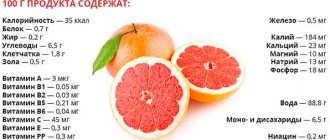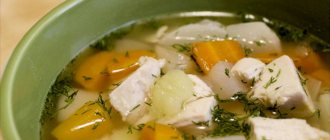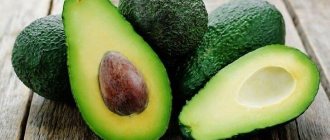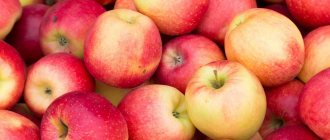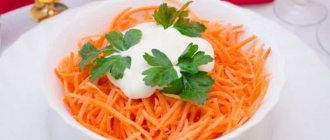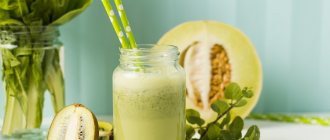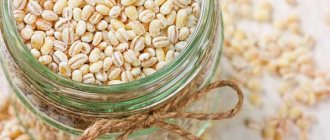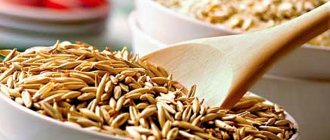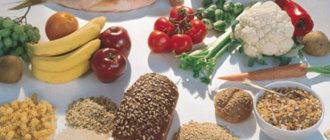This fragrant exotic fruit was once a tropical wonder on our table. After all, mangoes (more than 300 species) are grown in distant and almost fabulous countries: Thailand, India, Guatemala, Mexico, Pakistan. But now it is available to almost everyone. Its special sweet and sour taste with a slight pine note is successfully used by chefs to make and decorate sweet cocktails, fruit salads, nutritious smoothies, original desserts, sushi, syrups, and candied fruits. The juicy fruit is replete with beneficial substances. But is it allowed for patients with pancreatitis?
Beneficial properties of mango and its vitamin composition
Mangoes are rich in vitamins, minerals and biologically active substances. It contains:
- vitamins A, B, C, E;
- natural sugars (fructose, sucrose, glucose, acidose);
- essential amino acids;
- pepsin;
- pectins;
- oleoresin;
- carotenoids;
- cellulose;
- calcium, magnesium, iron, phosphorus, manganese, sodium, zinc.
The peel and leaves of the plant are enriched with tannins, and the seed contains mangosteen, which is known for its antipyretic effect. The fruit consists of 82% water, the remaining 15% is carbohydrates, 2% is dietary fiber, 1% is fats and proteins.
Mango is a low-calorie food. The calorie content of one hundred grams of sweetness is only 65 kcal.
The fruit has a wide range of useful properties:
- Strengthens the immune system.
- It has a mild anti-inflammatory and antipyretic effect.
- It has a calming effect, relieves tension, stress, and improves performance.
- Supports visual health, nourishes the retina, helps with dry cornea syndrome and night blindness.
- Strengthens vascular walls and heart muscle.
- Helps improve digestion.
- Normalizes the functioning of the pancreas.
- Promotes the breakdown of animal proteins and improves the absorption of oily foods.
- Improves intestinal microflora, helps normalize intestinal functioning in case of disorders.
- Helps get rid of heartburn.
- Normalizes bile excretion
- It has an effective antioxidant effect, promotes the removal of waste and toxins from the body.
- Helps stop bleeding.
- Activates the excretion of urine from the body.
- It has a beneficial effect on the skin and is used to treat many skin ailments.
The fruits and leaves of the plant exhibit medicinal qualities. Thanks to its valuable fortified composition, the fruit has found its use not only in cooking, but also in medicine, cosmetology, and pharmacology.
In folk medicine, they are actively used for intestinal disorders, depression, stress, varicose veins, skin diseases, for the treatment of colds, chronic inflammation of the pancreas, and strengthening the cardiovascular system.
The benefits and harms of pineapple for the human body
This sweet fruit can, if eaten regularly, bring many benefits to the human body, thanks to its unique composition, because every hundred grams of the delicacy contains:
- proteins – 0.3 g,
- fat – 0.1 g,
- carbohydrates – 11.8 g,
- organic acids – 1 g,
- dietary fiber – 1 g,
- water – 85.5 g,
- ash – 0.3 g,
- beta-carotene – 0.02 mg,
- vitamin A – 900 mcg,
- B1 – 0.06 mg,
- B2 – 0.02 mg,
- B5 – 0.16 mg,
- B6 – 0.1 mg,
- B9 – 5 mcg,
- RR – 0.4 mg,
- ascorbic acid – 11 mg,
- alpha tocopherol – 0.2 mg,
- niacin – 0.3 mg,
- potassium – 134 mg,
- calcium – 17 mg,
- magnesium – 13 mg,
- sodium – 1 mg,
- phosphorus – 8 mg,
- iron – 0.3 mg,
- sugars, including mono- and disaccharides – 11.8 g.
As for the energy value of pineapple, for every 100 g there are 52 kcal.
Benefit
Regular consumption of these fruits in the future can lead to the following improvements in the functioning of the digestive system of the human body:
- reducing the likelihood of developing inflammation of the gastrointestinal tract and pain syndrome associated with them,
- cleaning the intestines from helminthic infestations,
- increased immunity to intestinal and other infections and tumor formation,
- relief from heartburn,
- stimulation of the stomach,
- flatulence warning.
But they should be eaten with caution, taking into account the phase of development of pancreatitis.
Harm
Despite such an impressive list of positive effects from pineapple, there is a fly in the ointment. In some situations, this fruit can lead to the following troubles:
- due to the high content of organic acids, pineapple can aggravate the course of gastritis and peptic ulcers, and in large quantities even cause irritation of the gastric and duodenal mucosa in practically healthy people,
- allergic manifestations,
- destruction of tooth enamel by organic acids contained in pineapple.
These detrimental effects on various parts of the digestive system can negate all the benefits and pleasure from eating this exotic fruit.
Dangerous properties of the fruit
Despite the fact that mangoes generally have beneficial effects on the body and have many medicinal potential, you need to be careful when consuming the fruit. The main thing is to observe moderation. Even unripe fruits help with intestinal disorders, stool disorders, help improve intestinal microflora and activate the outflow of bile. However, if you eat more than two of these fruits, you can provoke intestinal and stomach colic, irritation of the digestive organs and the mucous membrane of the throat.
Overeating ripe mango risks:
- intestinal disorder;
- increased blood sugar levels;
- pancreatic irritation;
- development of allergies.
The fruits can be eaten with the peel. At the same time, you need to keep in mind that it contains a lot of fiber and, when consumed in large quantities, causes digestive upset. In addition, it is in the peel that a toxic resin called urushiol is found in small quantities. Its consumption can cause food allergies in many people.
There are known cases of the development of an allergic reaction when the skin of the hands comes into contact with the skin of the fetus. The skin begins to peel off, becomes inflamed, and may become covered with blisters and red spots. People with such manifestations need to wear gloves when peeling the fruit.
How to select and store ripe pineapple
It is very important to be able to choose ripe fruit. Eating unripe fruit can cause intestinal irritation, diarrhea, stomach and intestinal colic, and bloating.
When buying a pineapple, you need to pay attention to the following factors:
- Ripe pineapple has a mild fruity smell. A rich aroma indicates that the fruit is overripe, and its absence is a clear indicator of immaturity.
- The leaves of the fruit should easily tear away from the base and scroll around their axis; yellowed tops may be a sign that the fruit is overripe.
- The peel of a ripe pineapple is soft, but does not bend; too hard a peel indicates that the fruit is not ripe. If black or brown spots form on the skin, this is a sign that the product is spoiled.
Ripe pineapple is stored in the refrigerator without packaging or plastic bags. If the fruit is not ripe, it is better to leave it to ripen for several days at room temperature, as it will not ripen in the refrigerator and will become very watery.
Contraindications to eating fruit
The fruits of the plant are prohibited from being consumed if:
- Individual intolerance.
- Acute diseases of the digestive system (exacerbation of gastritis, ulcers, pancreatitis, etc.).
- Diabetes mellitus (only decoctions of leaves can be used).
- Increased blood clotting.
Mango should be eaten with caution during pregnancy and breastfeeding, as the product is quite allergenic and can cause intestinal upset, colic, and an allergic rash in the baby. In the first five months of lactation, it is better to avoid exotic delicacies.
Is it possible to eat mango against the background of pancreatic inflammation?
Mango helps improve digestion and has a beneficial effect on the intestines, stomach and pancreas. It activates the breakdown of animal proteins, facilitates the absorption of fatty, oily foods, normalizes intestinal microflora, and improves the processes of production and outflow of digestive enzymes.
Decoctions of mango leaves are especially beneficial for the pancreas. The drink has a number of properties:
- Improves digestion.
- Relieves inflammation from pancreatic tissue.
- Normalizes the production and activity of pancreatic enzymes.
- Has a calming, mild anesthetic effect.
| Property | Manifestation |
| Increasing the body's defenses | Consuming a small amount of pulp and leaf decoctions strengthens the immune system of the gland and significantly reduces the risk of developing complications of pancreatitis such as ulcers and cancer. |
| Regenerating properties | Mango promotes the healing of organ tissue damaged as a result of disease attack. |
| Bile removal | The fruits of the plant have a choleretic effect and help get rid of bile stagnation, which often accompanies or develops as a result of pancreatitis. |
| Removing excess fluid | The diuretic effect of consuming fruit pulp promotes the resorption of edema that appears during the inflammatory process and impedes the passage of pancreatic enzymes from the pancreas to the intestines. |
| Protection from negative influences | In addition, the fruits and leaves of the plant have a powerful antioxidant and antitoxic effect. They protect organs from the negative effects of free radicals and help remove toxins, waste and other harmful substances from the body. |
Whether it is possible to eat mango with pancreatitis depends on the stage, characteristics of the disease and the body’s reaction to this fruit.
In acute cases
In case of acute inflammation of the pancreas, as well as exacerbation of chronic pancreatitis, eating mango is prohibited. This is explained by several points:
- The fruits are enriched with dietary fiber, the consumption of which, if the functioning of the digestive organs is disrupted, leads to intestinal upset, constipation, stomach and intestinal colic.
- The pulp of the fruit contains a significant amount of sugars, the digestion of which increases the load on the pancreas.
- The product is quite allergenic. During the period of inflammation of the gastrointestinal tract, it can cause a severe allergic reaction and the development of anaphylactic shock.
After three weeks from the onset of the disease, you can start eating a small amount of mango leaf decoction. The drink will have a beneficial effect on the pancreas, normalize digestion, help relieve inflammation, swelling, and improve the transport of pancreatic enzymes from the pancreas to the intestines. However, you must first consult with a gastroenterologist.
In chronic form
At the stage of stable remission, provided there is no pancreatic pain, mango fruits can be introduced into your diet a little at a time. This should be done no earlier than 5-6 months after an acute attack of the disease and no earlier than two months after the end of pancreatic pain.
Consumption of fruits and leaf decoctions will help normalize digestive processes, strengthen pancreatic immunity, and significantly reduce the risks of relapses and the development of complications of the disease.
Useful properties of quince
The southern fruit, which is quince, despite its sour taste with a peculiar viscosity, has a huge number of admirers, which is understandable, because it has a wide range of nutritional properties that can benefit the human body. The fruit has the following medicinal effects:
- Antiemetic.
- Knitting.
- Hepatoprojector.
- Choleretic.
- Antiseptic.
In addition, quince is effective:
- Increases appetite.
- Accelerates the healing of burns.
- Eliminates headaches.
- Removes unpleasant odor from the mouth.
- Relieves hangover syndrome.
The fruit contains a variety of microelements and vitamin complexes:
- B vitamins.
- Beta carotene.
- Vitamin A, C.
- Calcium.
- Potassium.
- Phosphorus.
- Sodium.
- Iron.
- Organic acids.
Quince contains proteins, carbohydrates and fats, but in very small quantities, for example, in 100 g of fruit:
- 0.6 g protein.
- 9.6 g carbohydrates.
- 0.5 fat.
As you can see, the presence of fat and cholesterol in quince is negligible (100 g of fruit contains only 48 calories).
Juices and teas made from quince are recommended for the following pathologies:
- Cold.
- Anemia.
- Edema.
- Vomit.
- Diarrhea.
- Tracheitis.
- Bronchitis.
- Flatulence.
Quince juice is effective for tuberculosis, bronchial asthma, diseases of the liver, cardiovascular and respiratory systems.
The fruit is indicated for colitis and enterocolitis, which are accompanied by bleeding, it perfectly rids the body of toxins, and has pronounced anti-inflammatory abilities. Quince is often used in treatment as applications and rinses.
Why is quince dangerous for patients with pancreatitis?
Despite its healing properties, quince also has negative qualities, which, if consumed inappropriately, can cause harm to the human body. Those people who have been diagnosed with inflammatory pathology of the pancreas should be especially careful when taking the fruit.
A large number of various organic acids were found in fresh quince, primarily:
- Lemon.
- Wine.
- Tartronovaya.
- Apple.
These substances give the fruit pulp increased acidity, which in case of pancreatitis aggressively affects the mucous membrane of the diseased gland and stomach. Based on this, patients with the disease should avoid consuming fresh quince and its juice. This fruit can be present on the patient’s menu only after it has been heat treated.
In addition, the fruit contains essential oils, which also do not have the best effect on the lifespan. Basically, these oily substances are concentrated in its peel, so it is recommended to remove it.
Quince exhibits a strengthening effect thanks to its tannins (catechin, pectin and epicatechin). For this reason, it is contraindicated for patients prone to frequent constipation.
In some varieties of fruit, the presence of stony cells is noted - a substance that cannot be digested and absorbed by the human gastrointestinal tract. Stony cells pass through the intestines in “transit”, but in excess quantities they can provoke an attack of acute or chronic pancreatitis. Doctors and nutritionists do not recommend getting carried away with whole fruits, even after they have been heat treated. They should be present in the diet occasionally, and drinks made from quince must be filtered before drinking.
And the last “minus” of the fruit. It has a choleretic effect, which is completely undesirable for an inflamed pancreas. In order not to provoke a similar effect, quince drinks with significant concentrations should be avoided.
How to properly introduce the product into your diet
Mango for pancreatitis in remission and in chronic form is introduced into the diet according to the following rules:
- You need to start using it with one teaspoon of pulp, gradually increasing the daily dose to 200 grams.
- Do not indulge in sweetness: you should not eat the fruit every day (safe frequency is 2-3 times a week), and eat more than 200 grams of pulp in one day.
- On the day of eating mango, try not to eat any more sweets (including other sweet fruits).
- Be sure to peel and pit the fruits.
- It is forbidden to eat canned fruit.
- Under no circumstances should it be combined with alcohol consumption.
In case of chronic pancreatitis, it is recommended to beat the fruit pulp with a blender or knead with a spoon before use - the crushed product is easier to digest by the pancreas.
Acute pancreatitis and quince
Is it possible to eat quince with acute pancreatitis? Despite its beneficial properties, if used incorrectly it can cause harm to the body.
For patients with acute pancreatitis and during an attack of chronic pancreatitis, fresh fruit is strictly prohibited! In addition, you need to be careful with dishes that contain this fruit, and its maximum serving after culinary preparation is no more than 100 g.
To avoid complications, quince must certainly be subject to heat (cooking, stewing) and appear on the table exclusively in the form of compotes, in compliance with the following rules:
- Must be strained.
- Don't have a high concentration.
- Sweetened only with sweeteners.
Dried quince must be mixed with other dried fruits (apples, pears).
The compote prepared according to these recommendations can be drunk during acute inflammation in order to eliminate nausea, which often occurs at this stage of the disease. When the symptoms of relapse are reduced, it is allowed to introduce jelly made from diluted quince juice into the diet.
Rules for selecting and storing fruit
The rules for choosing a fruit depend on when you plan to eat it. The ripe fruit spoils quickly, so it must be eaten within the next few days. You can’t really speculate on the color of the ripeness of the fruit, since depending on the type, the color of the fruit can vary from green to bright yellow or red.
The following factors will tell you how to recognize a ripe mango:
- The fruit should be soft to the touch: with light pressure, the peel is slightly pressed, but does not tear.
- There is a rich fruity smell near the base of the fruit where it was attached to the branch.
- The fruits should be full, plump and as round as possible. Flat and thin fruits have little pulp and a lot of fiber, which is harmful to the pancreas.
- The peel is smooth, not wrinkled. Fruits with wrinkled skin were most likely picked very early, are not ripe and are beginning to disappear.
- A small number of brown spots are allowed on the skin of ripe mangoes.
- If the fruit has a sour smell, like an alcoholic drink, this is a sign of spoilage.
Ripe fruit should be stored in the refrigerator. Before storage, it must be removed from the bag, otherwise it will disappear. This mango can be kept in the refrigerator for no more than five days.
If the product will not be consumed in the coming days, it is better to choose a slightly unripe mango. It is harder to the touch, the skin and pulp do not lend themselves to pressure. It is not recommended to immediately put such fruit in the refrigerator, as it will not ripen there and will taste sour when consumed.
At first, the unripe fruit can be stored in a paper bag in a sunny place (depending on the degree of ripeness, it can remain there for two to five days). And when the fruit is ripe, put it in the refrigerator, but for no more than five days.
To preserve the treat for a longer period, it needs to be canned or frozen. People with pancreatitis are highly discouraged from consuming canned foods. Therefore, it is better to freeze them. Before freezing, the fruits should be washed well, dried, peeled and pitted, and then cut into cubes:
- If freezing is carried out in bags, you can put no more than a daily dose of fruit in one bag, since it cannot be re-frozen.
- If storage will be in plastic boxes, it is advisable to separate each single dose into longitudinal pieces or put them in rows, so that later it is more convenient to separate the required amount.
How to cook it correctly?
As mentioned above, quince should not be present very often in the menu of a patient with pancreatitis. When making jelly or marmalade from a fruit, its own pectin (jelly-forming compound) acts as a thickener. It is advisable to dilute the prepared fruit juice with other fruit juices. In this regard, the following juices are perfect:
- Apple.
- Pear.
- Cherry.
We offer a selection of interesting dietary dessert dishes that can be prepared for a patient with pancreatitis.
Marmalade
To prepare this sweet dish you will need the following products: quince - 2 pcs., sugar.
How to cook:
- Peel the fruit, cut into 2 parts, cut out the seed pod.
- Place the prepared quince halves into boiling water.
- Cook until the fruit becomes soft.
- When ready, transfer to a colander (to remove excess water).
- Weigh the boiled quince and determine its mass to calculate the required amount of sugar (1:1), that is, if the mass of the quince is 150 g, then 150 g of sugar will also be required.
- Combine the products, mix gently and cook over medium heat for about 1.5 hours until thickened, remembering to stir.
- Cover a flat dish with parchment, transfer the finished puree, smooth it out and put it in the refrigerator for a day.
- Cut the finished marmalade into cubes, place it on a flat dish so that the marmalade pieces do not touch each other, and let them dry for three days, turning them over periodically to dry them evenly.
- Next, sprinkle with sugar and store in an airtight glass container.
Jelly
This delicious dietary dessert is easy and simple to prepare. To prepare it, take: quince – 1 kg, sugar – 400 g, water – 0.5 l
How to cook:
- Wash the fruits and cut into slices.
- Place in a saucepan and add water.
- Cover the dish with a lid and cook over low heat until completely softened.
- Pull out the finished slices and strain through two layers of gauze without squeezing.
- Return the strained liquid back to the container, heat it up a little, add sugar, mix everything, and boil until tender.
Mousse
This sweet dish has a pleasant aroma and delicate texture. To prepare it you need to take: quince - 4 pcs., water - 0.5 l, sugar - 3 tbsp, ground cardamom - 0.5 tsp, ready-made toast.
How to cook:
- Peel the fruits, remove the seeds, cut into small pieces.
- Pour water into the bowl and add the prepared fruits.
- Bring to a boil, reduce heat, and simmer for 45 minutes.
- Drain the water, grind the fruit slices into a puree, transfer to a saucepan and put on the fire again.
- Add sugar, cardamom and keep at low temperature until the mixture thickens.
- Cool and serve with toast.
Recipes based on mango pulp and leaves
The pulp can be eaten either on its own or as part of fruit and vegetable salads, or baked with fish and meat dishes.
Fruit salad
A very tasty combination of mango, avocado, apples and kiwi. You can take other permitted berries and fruits.
To prepare the salad, mix all the ingredients one tablespoon at a time and pour in low-fat yogurt with a small amount of liquid honey.
Smoothie
Ingredients:
- Mango - 1 fruit;
- Kiwi – 3 pcs.;
- Yogurt – 250 ml;
- Honey – 1-2 tsp. taste.
The mango is peeled and pitted, slightly chopped and pureed. Add ½ of the total yogurt to the pulp and beat thoroughly with a blender. Separately, peel the kiwi and puree it along with the remaining half of the yogurt and honey.
The resulting liquids are poured into the bowl in layers - first a mango smoothie, then a kiwi smoothie.
Baked fish
Ingredients:
- Non-oily fish fillet – 400 grams;
- Mango – 1 pc.;
- Honey – 1 tbsp;
- Lemon juice – 1 tbsp;
- Vegetable oil;
- Salt, spices to taste.
The fish fillet is divided into portions, seasoned with salt, sprinkled with a small amount of lemon juice and baked in the oven for 20-25 minutes.
At the same time, the mango is peeled and pitted, chopped and placed in a heated frying pan, greased with oil. The pulp is fried for 3-4 minutes, lightly pressing until a sauce-like consistency is obtained.
The fish is placed on a plate and mango sauce is poured on top.
Diet recipes with pineapple
Pineapples can also be used to prepare fruit and vegetable salads, sauces and gravies for fish and meat dishes. The fruit goes very well with chicken. Such a dish will not only be incredibly tasty and juicy, but also dietary.
Beet salad
Ingredients:
- Boiled beets – 200 grams;
- Fresh pineapple pulp – 200 grams;
- Walnut – 50 grams;
- A pinch of salt;
- Olive oil for dressing.
Peeled boiled beets and pineapple pulp are cut into cubes, seasoned with a small amount of oil and salted. Top the salad with crushed nuts.
Baked chicken
Ingredients:
- Chicken fillet – 300 grams;
- Pineapple pulp – 150-200 grams;
- Yogurt or sour cream (without additives) – 100 ml;
- Salt, spices to taste;
- Cheese – 50 grams.
The meat is beaten on both sides, divided into portions, sprinkled with salt and spices. Place the fillet on a baking sheet, spread yogurt or sour cream on top, lay out pineapple pieces and sprinkle with grated cheese.
Cover the top of the baking sheet with foil and place in the oven, preheated to 180 degrees, for 25 minutes.
